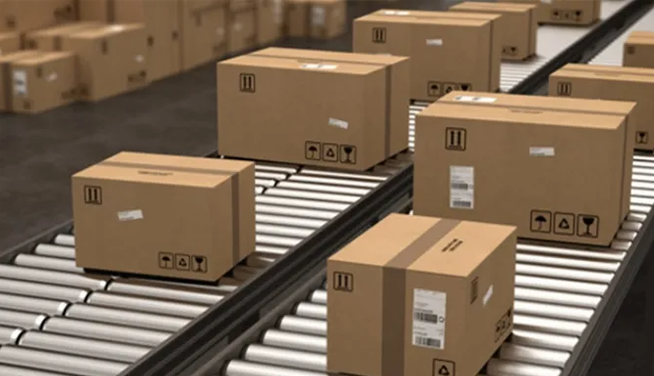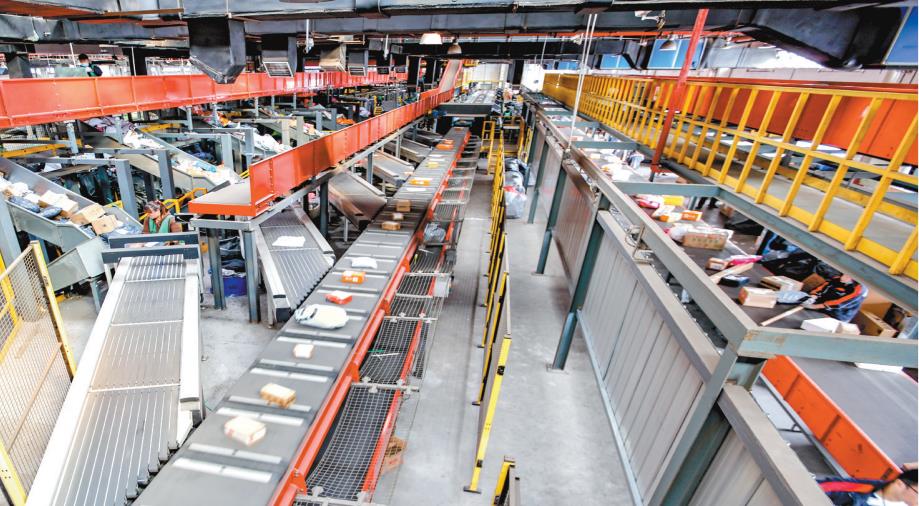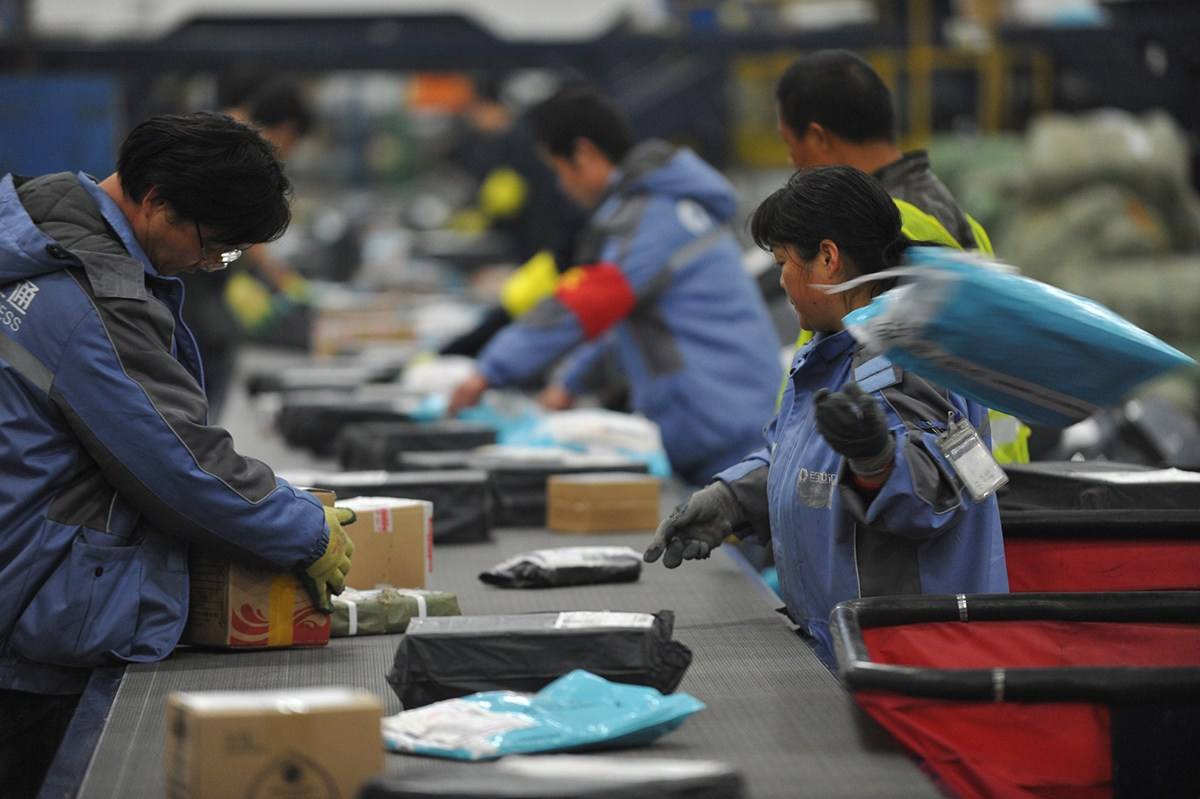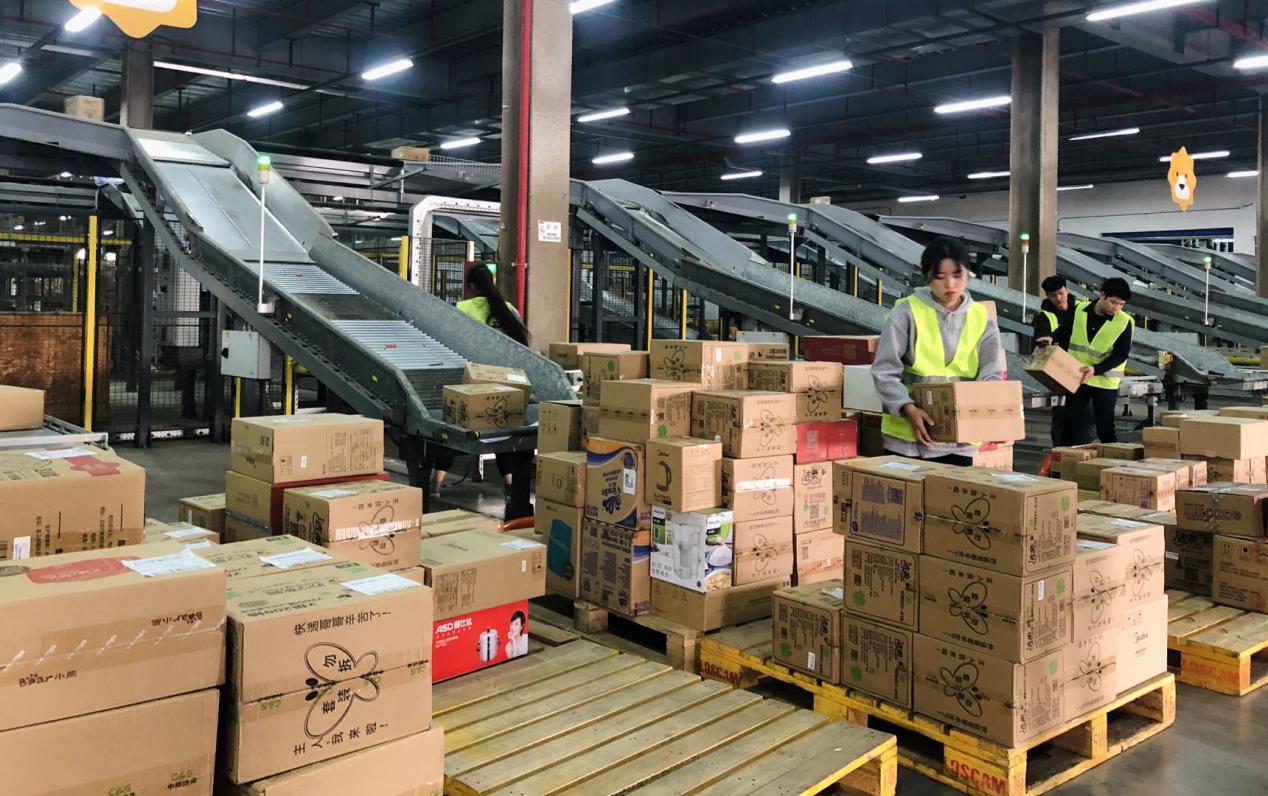Introduction
Over the past decade, China’s courier and logistics industry has experienced tremendous growth, becoming a cornerstone of the country’s booming e-commerce sector. This rapid expansion has made China the world’s largest market for express delivery services. Fueled by a combination of technological innovation, government support, and changing consumer behaviors, the logistics industry has undergone significant transformation. However, with this growth comes challenges that the sector must address to sustain its long-term success. This article provides an in-depth analysis of the factors driving the rapid growth of China’s logistics industry, its impacts on the economy and society, and the challenges it faces in the future.

1. The Evolution of China’s Logistics Industry
China’s courier and logistics sector began to take shape in the 1980s, with its roots in state-run postal services. The real surge, however, came in the early 2000s with the rise of e-commerce platforms like Alibaba's Taobao and JD.com. These platforms revolutionized consumer shopping habits and created an insatiable demand for fast, reliable delivery services.
In 2022, China handled over 110 billion packages, making it the largest express delivery market in the world. This exponential growth reflects the deep integration of logistics services with China’s digital economy, supported by a vast network of delivery companies, warehouses, and distribution centers.
2. Key Drivers of Growth
Several factors have fueled the rapid development of China’s logistics industry:
2.1 E-commerce Boom
China's e-commerce market is the largest in the world, contributing significantly to the rise of the courier industry. In 2022, China’s online retail sales exceeded 13 trillion yuan, with platforms like Alibaba, JD.com, and Pinduoduo playing pivotal roles in generating high volumes of deliveries. The "Double 11" (Singles' Day) shopping festival, for instance, has become the world’s largest shopping event, leading to billions of deliveries in a matter of days.

2.2 Technological Innovation
Technological advancements have played a critical role in enhancing the efficiency of the logistics sector. Key innovations include:
- Big Data and Artificial Intelligence (AI): These technologies help companies optimize delivery routes, forecast demand, and manage inventories in real time. AI-driven sorting systems have drastically reduced the time it takes for packages to be processed at warehouses.
- Automation and Robotics: The use of automated sorting machines and robots in warehouses has improved speed and accuracy, reducing human error. Many companies are also experimenting with drone deliveries and autonomous vehicles, especially in remote areas.
- Smart Logistics Platforms: Platforms like Cainiao (Alibaba's logistics arm) provide an integrated system for tracking, managing, and optimizing the delivery process, connecting millions of merchants, couriers, and consumers in a seamless network.

2.3 Government Support
The Chinese government has recognized the importance of the logistics sector and has implemented favorable policies to support its growth. Initiatives such as "Internet Plus" and "Smart Logistics" have provided financial incentives, infrastructure development, and regulatory frameworks that encourage innovation and investment in the logistics industry. Additionally, investments in national transport infrastructure, such as high-speed railways and highways, have enabled faster and more reliable delivery services across the country.
3. Impact on Economy and Society
The rapid growth of the courier industry has had far-reaching effects on both China’s economy and its societal structure.
3.1 Economic Contributions
The logistics industry has become a major driver of China's economy. It provides millions of jobs across the country, from delivery drivers to warehouse workers and IT specialists in logistics technology. According to government reports, the industry directly contributes trillions of yuan to the national GDP, while also fueling growth in related industries like packaging, warehousing, and manufacturing.
Additionally, the logistics sector has helped boost regional economies by connecting rural and less-developed areas to the national supply chain. For instance, farmers in remote regions can now sell their produce to urban centers via e-commerce platforms, relying on fast and efficient delivery networks to reach distant markets.
3.2 Consumer Behavior and Lifestyle Changes
The convenience of fast delivery has significantly altered Chinese consumer habits. Consumers now expect same-day or next-day delivery, particularly in large cities where services like JD Logistics and SF Express offer ultra-fast delivery times. The growing demand for on-demand services, such as grocery delivery, has expanded the scope of the courier industry beyond just traditional e-commerce.

This change in consumer behavior has also led to the rise of the "new retail" model, where online and offline shopping experiences are integrated. Retail giants like Alibaba have opened smart stores, where products can be purchased online and delivered within hours, blending the physical and digital shopping experience.
4. Challenges Facing the Industry
Despite its rapid growth, China’s courier and logistics industry faces several challenges that need to be addressed for sustained development.
4.1 Labor Shortages and Working Conditions
One of the biggest challenges is the shortage of skilled labor, particularly delivery drivers. The work is physically demanding and often low-paying, leading to high turnover rates. Many delivery workers face long hours and high pressure to meet tight deadlines, contributing to poor working conditions. As labor costs rise, companies are under increasing pressure to balance affordability with fair compensation and benefits for workers.
4.2 Environmental Impact
The rapid expansion of the logistics industry has raised significant environmental concerns. The vast amount of packaging waste, especially single-use plastics and cardboard, generated by billions of deliveries each year has a significant environmental footprint. Additionally, the carbon emissions from delivery vehicles, especially in urban areas, contribute to air pollution.
To address this, companies like Cainiao and JD Logistics have begun implementing green initiatives, such as using biodegradable packaging materials and optimizing routes to reduce fuel consumption. However, more comprehensive measures are needed to make the industry truly sustainable.
4.3 Data Privacy and Security
With the increasing digitalization of the logistics industry comes heightened concerns about data security. Couriers collect vast amounts of personal information, including addresses, phone numbers, and purchasing habits, making them prime targets for cyberattacks. Ensuring that customer data is securely handled and protected is an ongoing challenge, and any data breaches could significantly damage consumer trust.

4.4 Regulatory Hurdles and Market Saturation
As the market becomes more saturated, competition among courier companies is intensifying. While major players like SF Express, JD Logistics, and ZTO Express dominate the market, smaller companies struggle to keep up. In addition, evolving regulatory frameworks related to labor laws, data protection, and environmental standards present new challenges for logistics firms as they adapt to stricter rules.
5. Future Outlook and Trends
Despite the challenges, the future of China’s courier and logistics industry remains promising, with several key trends shaping its development:
5.1 Increased Automation and AI Adoption
The ongoing adoption of automation technologies and AI will continue to enhance the efficiency of delivery operations. Automated warehouses, drones, and driverless delivery vehicles will likely become more common, particularly in urban areas where delivery speed is critical.
5.2 Sustainable and Green Logistics
As environmental awareness grows, the logistics industry will place greater emphasis on sustainability. Companies are expected to invest in green packaging solutions, electric delivery vehicles, and carbon-neutral initiatives to minimize their environmental impact.
5.3 Cross-border and Global Expansion
With the Belt and Road Initiative and other trade agreements, Chinese logistics companies are expanding their services globally. Cross-border e-commerce is becoming increasingly popular, and companies are setting up international delivery networks to meet growing demand from overseas markets.

Conclusion
China’s courier and logistics industry has experienced unparalleled growth over the past decade, driven by e-commerce, technological innovation, and government support. While the sector faces challenges related to labor, environmental sustainability, and data security, the future of the industry remains bright. With continued investment in technology and infrastructure, China’s logistics industry is poised to maintain its status as a global leader in the coming years.



